
Rami Ismail is one half of the former team best known as Vlambeer, the developer behind games like Ridiculous Fishing, Luftrausers, and Nuclear Throne. He's on Twitter as @tha_rami.
When I was a kid, I would run away from home every time I needed an injection, which was at least once a year for the vaccination I needed for our annual family trip to my father’s homeland of Egypt. I would scream and plead and fight whoever tried to hold me down whenever I was in the doctor’s office. More than once, the sheer fear summoned some ungodly strength in me that injured whoever was unlucky enough to be involved in the process of keeping me healthy.
My doctor was stern and curious and caring the way he has led me to believe any good doctor should be. Every year, he tried a new strategy to avoid the panicked wrath of the rapidly growing child that was me. He tried having me focus on a puzzle, he tried having strong people around to hold me still, he tried tricking me by making me count to ten while he snuck the needle in at three--and while it worked, he realized that that would obviously only work once.
One year, I must’ve been ten or eleven years old, he tried to distract me with a small chat. He asked me what I wanted to be when I grew up. I said I wanted to be a pilot. I hesitated for a second, and corrected myself: I wanted to make video games.
Ever since we had gotten our family’s first computer at age six, I had been rewriting little bits of code to change the games that came with it. I had once changed a game to show my own name, and I’d been chasing that same rush of changing words to change games ever since. But my father culturally had high hopes for me to become a doctor, a lawyer, or an engineer. I was bashmohandes Rami, the casual Egyptian honorific for a respected and high-ranking engineer.
“My father thinks I should be a doctor, like you. That way I can help people, and have an important job.”
The doctor looked at me, or I think he did. I might have had my eyes closed. I might have been tensed up, scared with the anticipation for the sting of the needle. I don’t remember anything but the tone of his reply.
“Making games seems like an important job to me. Games make people happy, don’t they? Happiness is very important to being healthy. So how about we make a deal? I’ll help make sick people healthy again, and you help keep healthy people happy.”
I don’t remember the injection that day, but I’ll remember those words forever. You were right, doc.
Best Game: Microsoft Flight Simulator
For the past decade, I spent most of my days doing one of two things: making games, or helping other people make games. While I think most folks that know me on the ‘gaming’ side of the fence know me from Nuclear Throne, LUFTRAUSERS, Super Crate Box, or Ridiculous Fishing, in the industry I’m far more known for the tools I make, and the talks I give about game design, marketing, and the business of making games.

It started pretty straightforwardly: when Vlambeer was founded back in 2010, it was a tiny two-person studio in the Netherlands with no fans, no games, and no money. To be able to reach international audiences, we couldn’t depend on the games press in the Netherlands, which (while lovely) writes in a language pretty much only understood by the local population. We’d need to go to London--but the money I made selling and servicing computers really didn’t allow for a trip like that. I had some experience doing public speaking from participating in Model United Nations events in high school, and I’d heard that sometimes, good speakers would get paid to fly places. So that was the plan.
Fast forward to 2013, and I had started flying pretty regularly. The talks I gave had become popular around the world, and they had gotten so well-known that I was getting invitations from countries and developer communities that I hadn’t even dreamt of visiting. Sadly, they were often small enough that they couldn’t afford the travel costs and hotel, and I couldn’t afford them either. That stalemate stayed in place until Ridiculous Fishing came out and catapulted Vlambeer from ‘two kids making games’ to ‘a games studio with resources’. My co-founder graciously allowed me to use some of the money we made with Ridiculous Fishing for travel, and I vowed to visit every country that had invited me but couldn’t afford the costs.
The half-a-decade that followed, I made good on that vow, and a lot has happened since. I’ve sung Dutch karaoke in the basement of a bar filled with developers from all over South America. I’ve learned how students eat food cheaply in Indonesia, and I’ve been asked to cut the ceremonial ribbon on new developer associations. I’ve sat staring across each ocean from each side, chatting with developers about their lives and opportunities and challenges. Everywhere I went, I tried to help, connect developers and organisations and investors and governments--and everywhere I went, I learned from the local developers, and from their cultures.
The tempo was grueling, often moving between continents two or three times a month, but I didn’t care much. The people I got to meet were all inspiring, incredible people. As for the travel--I love the hotels--the sameness of hotels around the world, and the vague familiarity of a room you’ve never seen before. And the airplanes? They were my respite from everything, my break from a world that changed all around me all the time. I have always been fascinated by the physics of airplanes, and with the bit of flight training that I had a decade ago, I would stop worrying about everything happening on the ground and stare out the window and look at the wings, and imagine the beauty of the incredible forces lifting a hundred-thousand kilos up into the air.

And when I’d change my focus and look beyond the wing, I would stare at the little villages and cityscapes, the mountains and roads, the long stretches of nothingness. I would wonder about the little villages below. The roads that were familiar to the people that lived in those villages. The routines they had, the lives they lived, the things they were up to. The world passed underneath me, and I wondered if any of them saw the airplane up in the sky, and wondered about the person looking back down at them.
There’s a recently minted word for that profound and overwhelming realisation, that the people you come across are all as full and complex entities as you are--sonder. Sonder is my favourite word.
Flight Simulator is the only game I’ve ever played that evokes that feeling. As I simulate the flights I have flown for a decade, I stare at the little simulated villages and cityscapes, the mountains and roads, the long stretches of nothingness. I wonder about the little villages below. The roads that are familiar to the people that live in the reality of those simulated villages. The routines they have, the lives they lead, the things they are up to. The world passes underneath me, and I wonder if any of them would see the airplane up in the sky if it were real, and if they would wonder about the person looking back down at their simulated self.
Best Touch: It is impossible to overstate how profound it is for a game to contain a relatively complete, three dimensional, real-time version of Earth. Anybody on Earth being able to step outside, look around, boot up the game, and judge how accurate the simulation is--and even if it is not that accurate, the fact that such a thing is possible is beyond comparison. The fact that this game is an accessible flight simulator on top of all of its technical achievements is beyond words.
Least Favorite: I wish the team would focus on updating parts of the world that are less common. The first three updates were Japan, the United States, and the United Kingdom. I would love to see proper updates for Africa, South America, the Middle East, and the rest of Asia. This game has the potential to show the world to anyone who wishes to see it, and there’s something a little sad and dispiriting about making only the places we already know beautiful.
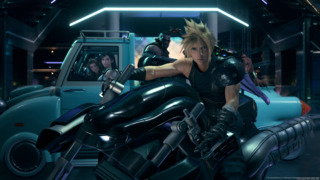
Alt: Final Fantasy VII Remake is staggering. I loved the narrative, the twists, the story. I loved the incredible art direction and music. But the thing that stands out is that, despite the original being a turn based JRPG, and the Remake being an real-time action-adventure game, describing your strategy for any boss fight sounds remarkably similar. Like in the original, you flow between offensive and defensive play, you survive battles by grace of your last potion, and you cheer at the perfectly timed ATB fill. Final Fantasy VII Remake stands as a proof of what wonders are possible if you allow the old to be new again.
Best AAA: Ghost of Tsushima
If a time traveler from the year 3000 appeared in front of me and said that the universe depended on them being able to identify every game design trend from the eighth generation of consoles, and they could only bring home one item the size of a mid-sized box, I’d hand them a PlayStation 4 with Ghost of Tsushima and send them back to their own time.
Ghost of Tsushima is an open-world game with parry-based combat and stealth involving high grass, in which players engage in designed skirmishes with variable entry points and approaches. The game features a tech tree that includes everything from a grappling hook to slow-motion bow & arrow shots, to climbing and jumping puzzles & a power bar that fills up over time for an ultimate attack. The story focuses on the greys between absolutes and the collection of a small merry band of characters--well, you get the point, it’s literally all there.
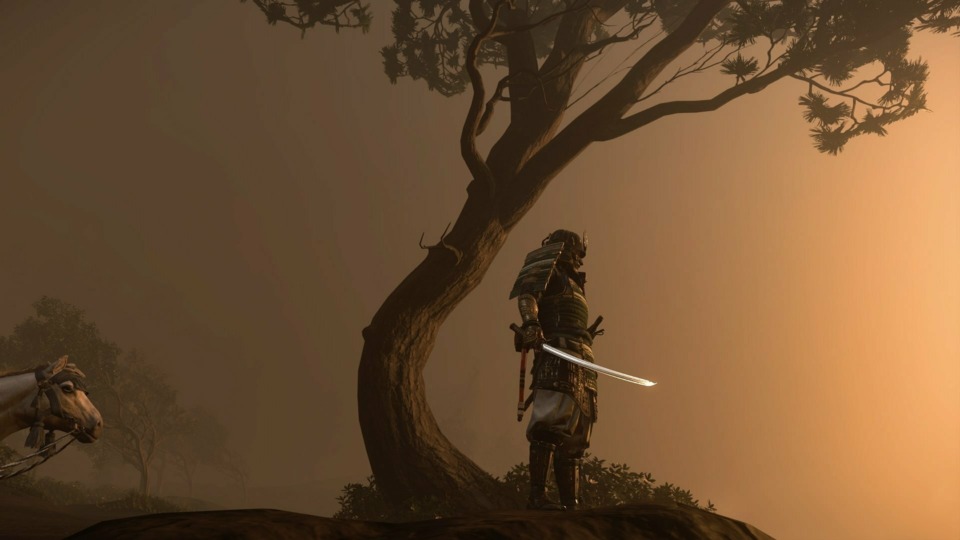
Despite that, the game feels incredibly coherent. The game has a strong focus on short ‘15 minutes’ quests, to the point of warning you when a story sequence might take much longer. The mechanics unfold slowly but with meaningful narrative pacing, and the story of Jin Sakai remains an interesting medium-urgency activity throughout a game filled with things to do. That’s not to say that the story doesn’t punch hard--the game rapidly changes pace from things going well to things being absolutely terrible.
The plot of the game speaks to themes of tradition and progress, of a culturally imposed sense of honour and pride, and of finding your way in a world that practically doesn’t adhere to those ideas anymore--or maybe never did outside of your own upbringing. These are themes that spoke to me deeply, and themes I do not commonly find explored in games beyond the generational version where teenagers rebel against adults. The resolution of the story felt well-earned, and the story throughout threw quite a few sucker pu--ahem--unexpected swings.
It feels exactly as if Sucker Punch wanted to close this generation of consoles with “here’s what we all figured out this past decade, and here’s one final iteration on all these ideas and trends.” The result is that Ghost of Tsushima is an exceptional open-world game--a beautiful world in which there’s always something familiar to do, but never too familiar, and never too much.
Best Touch: The guiding wind and golden bird and smoke are my favorite innovation in open-world games. Instead of chasing a little indicator, you’re following the very same wind that makes so much of the world look gorgeous, and the golden bird luring you to nearby points of interest means that they can both have an expansive world but also have ‘something to do’ nearby. I hope every game ever steals some of these wonderfully executed ideas.
Least Favourite: I call this input collision, but there was too much mapped to similar or identical inputs. Even by the end of the game, I frequently found myself frantically searching for the right combination of buttons to press to swap to the sleep darts, and I’d often end up accidentally setting my sword on fire instead.
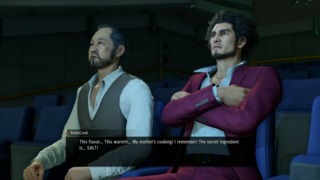
Alt: Yakuza: Like a Dragon is a great entry in one of my favourite series, hampered by a really grindy & borderline unfun third act. Kasuga is as endearing as former series mainstay Kazuma Kiryu was, and responds to the absurdity of the game’s defining substories with a slightly different reluctance that sets him apart enough, but still allows the trademark ‘such an extreme case of ludonarrative dissonance that it is actually coherent again’-style of storytelling. While the swap to party-oriented turn-based combat means some of the lone wolf mythology of Kiryu’s Yakuza is lost, the cast of characters that join with Kasuga along the road are more than worth the trade-off. Most important, the main character of the game--the location--is a wonderful addition to the Yakuza franchise, and I look forward to hopefully visiting the digital city of Ijincho again in the future.
Best AA: Hades
I have a deep love for the post-Spelunky world of weird roguelikes, and this iteration on Slay the Spire and the school of action roguelikes that Nuclear Throne was part of was obviously incredibly exciting to me. Hades feels as close to a flawless expression of the ideals of the genre as you can possibly get--it is mechanically intricate, content-heavy, full of choices that snap together like an automatic watch with cogs and gears and screws that are smaller and more precise the closer you look. It has that Supergiant flair in everything--it is overflowing with beautiful art and punch-y animation, it is balanced skillfully and with tremendous focus, it features versatile and evocative sound design, and it weaves a cleverly told character-focused narrative through turning what is usually an unintentional implication of roguelike design into an intentional part of its storytelling.
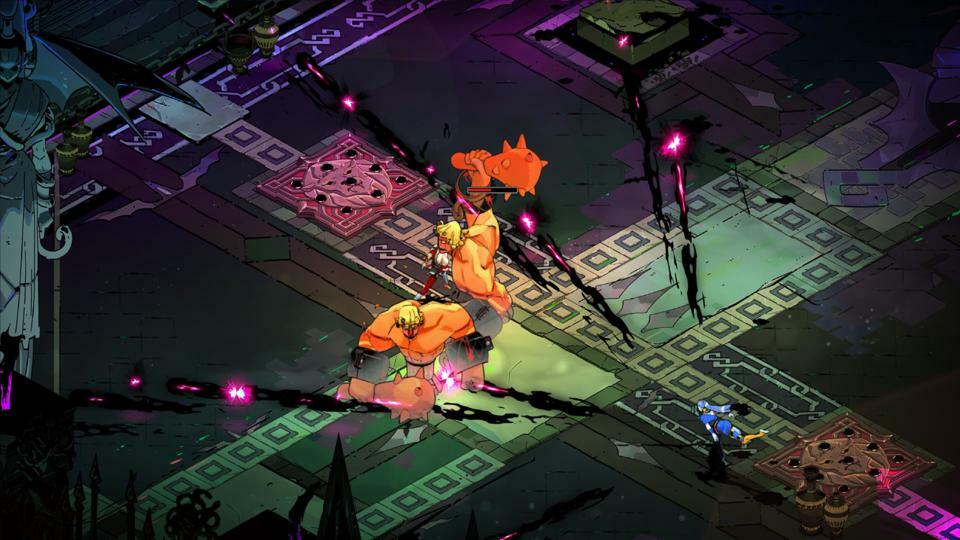
Everybody involved with this brought their A-game, and the result is a game that feels smooth without feeling sterile. It is brave, and genuine, and sincere, and made with a firm belief in that what was being made adhered to the standards of what was supposed to be. It is confident in that way that you can only be if you’re scared out of your mind whether people will like your work, tempered by the fires of Early Access with a committed and opinionated community.
All of that said, like Bastion and Transistor before it, I did not love Hades. Most of its charm was lost on me, and I bounced off immediately after clearing it the first time. I didn’t fall into the world, I didn’t connect with the characters, and I didn’t love the identity of the game much. Still, I played it start to finish and spent almost 60 hours on it.
Hades is the kind of game that you don’t have to love to have to admire. It’s the pinnacle of its genre, a new station after Dead Cells, and it will inspire an entire new direction for the genre now that this particular peak has been reached. The beauty of this moment is that it is unclear which of the many iterations and evolutions from Hades will lead in this new generation of roguelikes. That is exciting to me, because as far as I’m concerned, there’s a ton of potential in this new hybrid of roguelike and narrative.
As a developer, I obviously also cannot ignore the aspirational circumstances the game was created in. Developer Supergiant set strict rules on overwork and made decisive choices to keep the development process healthy and positive. The success of Hades is a success for the games industry, and combined with being a superb exercise in design and presentation, in my mind it deserves the title of Best AA Game of 2020.
Favorite Touch: Sorry, it’s a Supergiant Games game, so it’ll always be the exact same answer: every aspect of the game is great, but as always, the audio design is it.
Least Favorite: I wish I could put my finger on it. Everything feels good. The dash is brilliant. The attacks are weighty or snappy. The story plays out incredibly well given the structural limitations. The characters are well-written and well-acted. The graphics are gorgeous. The music is phenomenal. The enemies vary from good to great. The biomes are fun. The weapons are fun. The boss fights are the ‘sit up, lean forward’ kind of tense. There’s nothing to complain about. Maybe that’s it? Maybe there’s just nothing to really point at and go “this is bad” or “I would have approached this differently and I can say with certainty that it would’ve been better”. Maybe I just like my games to feel a little less perfect--not the perfect that means flawless, but the perfect that means that given the (usually high) amount of risk taken in a Supergiant project, the best possible outcome was achieved. But can you hold something like that against a game? I don’t know. All I know is that I’m grateful for Supergiant Games for setting the industry bar this high, and for continuing to improve and iterate on their studio, their process, and their work.
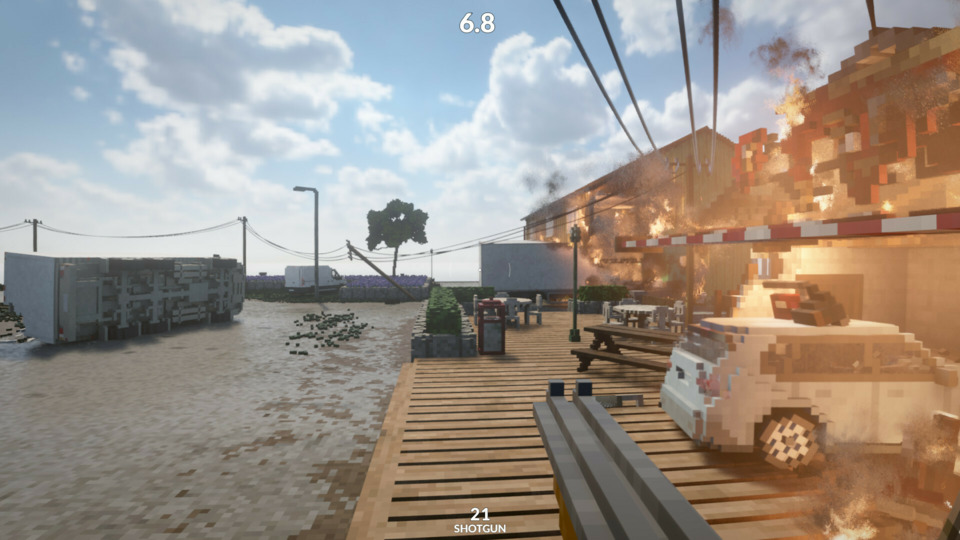
Alt: Teardown is what I believe happens when a programmer really liked Quadrilateral Cowboy speedruns and also just happens to be really good at voxels and physics-based destruction. I don’t know the developer, so I do not actually know if that is what happened, but it’s how I’m going to explain the game anyway. The basic version is that you are a character that gets swept up in a story of danger and intrigue and the only way out is voxel destruction. Teardown is fun, clever, and the challenges are frequently timed tightly enough that the sense of satisfaction of completing one is phenomenal.
Best Atmosphere: 13 Sentinels: Aegis Rim
I have never played anything like 13 Sentinels: Aegis Rim before in my life. I am grateful I played it, because I am fairly certain that I will never play anything like 13 Sentinels: Aegis Rim again. This game would have been my Game of the Year, by a large margin, in any year in which Flight Simulator 2020 had not launched.
13 Sentinels is an extremely Japanese game about high school kids, kaiju monsters, giant robots, and the end of the world. It requires a certain amount of… tolerance… for some of the tropes of that type of game, narrative, and genre, although it doesn’t require a fondness for it. If you haven’t played the game, and you tend to agree with my opinion in games, and you have a PlayStation, just stop reading this section now. Buy the game, and come back in a few days after you’ve binged your way through all of it in absolute shock that something so clever has been created.
The game is partially a point and click visual novel that follows a group of 13 protagonists in a non-linear, non-chronological narrative spanning several historical periods in the same city with unreliable narrators and incomplete observations while involving so many twists and turns that change the context and the motivation of characters as they their stories intercept that it should be borderline impossible to follow--and somehow it’s entirely coherent.

The story revolves around a group of high school kids enabling the ‘Sentinels’, mind-destroying robot superweapons from the future, to fight an unavoidable and impossible war against time-traveling monsters. In between the story segments, and with a slowly increasing understanding of what is happening, you play through that ultimate war through a simple active-turn based strategy-meets-tower defense game that is far from remarkable, rarely fails to be interesting, and never becomes overbearing.
Every protagonist has its own “gimmick” both in narrative and gameplay--one is stuck in a Groundhog Day time loop, one has to complete certain objectives before they lose their mind, one is trying to piece together their lost memories of a murder, and another is trying to hunt down people because of a talking pet. Being able to (mostly) freely switch between these perspectives for the fifteen-minute cliffhanger chapters means that frequently, playing the game has so much momentum that it’s borderline impossible to stop playing. Every chapter adds a little piece to the puzzle in your head, and before long you find yourself guessing at what is next.
I took notes at important reveals, I sat in shock at contradicting information, I grinned at things working out, I teared up at things coming together, I quietly processed a betrayal, I got angry at the unfairness of it all, I muttered curses under my breath at a sinking feeling being proven right, I clapped at a character I thought was lost being found again--I think 13 Sentinels maxes out the legal amount of emotions any piece of media is allowed to make people feel.
Best Touch: Tons of games have this narrative structure where you start with one narrative strand, and then it ‘opens up’ and the possibility-space balloons. The weakest part of any of those games tends to be the moment where they need to take that space and start reeling it back in to a single satisfactory conclusion. Many games end up trying to continue their story as if the momentum and agency hasn’t changed--but as your options reduce in number and impact, the contract between game and player has meaningfully been altered at that point. 13 Sentinels: Aegis Rim somehow avoids the moment feeling cheap, and instead makes it feel thrilling when the range of possible truths starts to reduce, and you start homing in on what is really happening.
Least Favorite: As I was explaining why I loved the game so much to my mother, who has been gaming for a few years now, I got to the point where I had to explain that all the characters were naked during combat sequences, and the stark difference in from what perspective the male and female characters are portrayed. Or the part where the male ‘Sentinel’ activation switches are almost all on the hands of the characters, while the female ‘Sentinel’ activation switches are almost all on places that require clothes to be moved out of the way. Or the part where there one female character that keeps getting bumped over seems to always land in a way that exposes more than comfortable. I don’t think my mom is going to play 13 Sentinels, and since I almost bailed on the game a few times out of annoyance early on, I fully understand her attitude here. You need a tolerance for that sort of nonsense to appreciate this game, and my mother has lived life long enough to be all out of tolerance for nonsense.

Alt: Ikenfell is exactly what it wants to be. It’s a magical school game that rides on a queer, vulnerable, honest aesthetic wondering about identity and expectations and love and trauma. Compared implicitly against the almost dogmatic rigidity of Harry Potter’s Hogwarts, Ikenfell creates a fictional world of magic, a world you’d expect to be open-minded and welcoming, but Ikenfell manages to ensure the real world and lives of actual humans are not excluded or exempted just for being different.
Best Emergent Territory: There Is No Game: Wrong Dimension
There Is No Game: Wrong Dimension is The Stanley Parable if The Stanley Parable was made by a French independent developer that has played The Stanley Parable and also has a flair for melodramatic storytelling and a love for the history of video games.

It’s simple, it’s heartwarming, it’s awkward, it’s funny, it’s confident, it’s so incredibly clever. There Is No Game: Wrong Dimension pulls out all the stops, using your love for games both as a springboard for its jokes and as a way of meaningful storytelling.
I would write more, but I shall not. There might not be a game, but you should play it anyway.
Best Touch: The credits sequence is incredible.
Least Favorite: There Is No Game: Wrong Dimension definitely has moments where the solution feels unfairly precise or narrow, and those moments break the game’s flow and pacing in ways that take a while to recover, especially if the solution ends up less satisfying than the one you came up with.
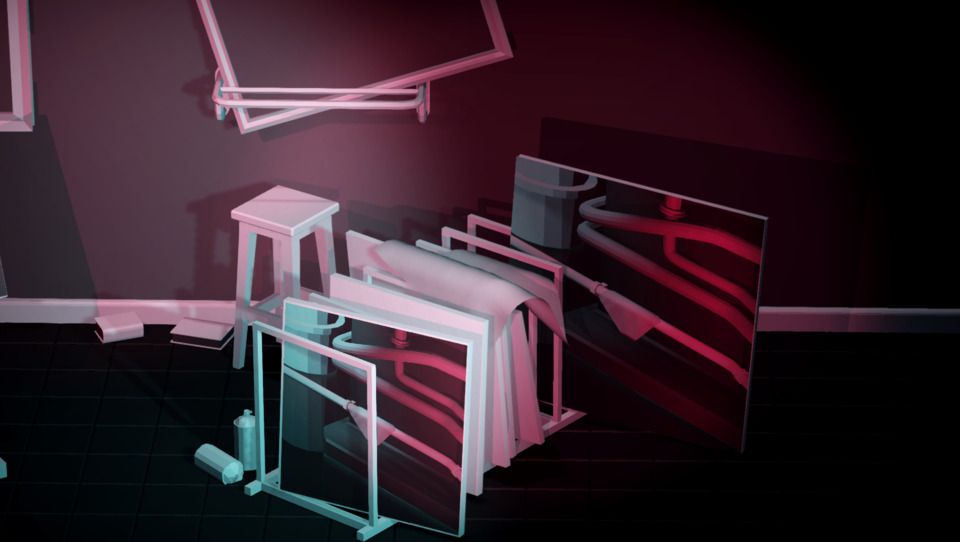
Alt: Hadr is a game about the magic trick of making something disappear under a veil, only you play the veil. It’s something new and interesting by Czech independent developer Dominik Konečný, and makes for an incredibly lighthearted and relaxing puzzle game.
Best Whimsical: Animal Crossing: New Horizons
Animal Crossing: New Horizons could not have launched at a better moment. Just as everybody’s world was shrinking to a state of lockdown and quarantine and isolation, Nintendo’s latest entry to the beloved series brought us friends, joy, and a lighthearted world in which collecting seashells was our biggest worry. Well, that and the mortgage forced upon us by the capitalist raccoon that also runs the island’s economy.
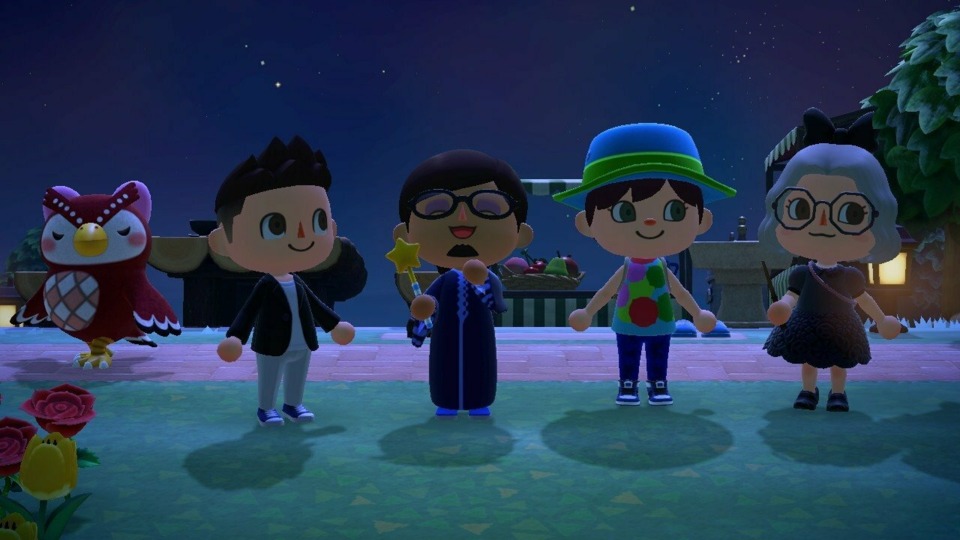
When I play games, I frequently try to disassemble the process of creating them in my head--why did things end up the way they are, where was the focus, what was the immediate goal and how did it slip away over time? For the Animal Crossing series--the central tenets seems to be a connection to our real world, and the necessity to slow down--and those two rules are immediately what gives it its unique flavour.
Where most games urge you to throw yourself at them fully, engage with them as intensely as possible, and think about them when you’re not playing, Animal Crossing is perfectly content to just exist for you to visit whenever you want. In fact, the game actively endeavours to push you away from it, giving you only a limited amount of activities for each “day” in the game. At the same time, New Horizons gives players more agency and more to do than any game in the series, which means that even if you play for hours every day, it is rare that you’ll finish a session having done all you could do.
What made Animal Crossing work is that it is social and expressive and individualistic at the same time. You can ‘play multiplayer’ without ever going online by sharing pictures of your world, your outfit, your catches--and the game encourages it with a tremendous range of puns and jokes (all localized perfectly into other languages, too). You can talk about how you got something that others don’t, or how you want something that others have. Within days of the game launching, a healthy community of trade, advice, and conversation had kicked off about this new shared world as the sad state of the normal world faded from view for a while.
Animal Crossing: New Horizons brought me a lot of joy, but the thing I will remember it for is how it saved the most important holiday of the year for me. Ramadan, the Muslim month of fasting, is characterized by its many communal breakfasts and dinners, the togetherness of facing a challenge of not eating and drinking throughout the day as a global community. For the first year in a decade, I spent all of Ramadan at home. For the first time in my life, I spent Ramadan alone.
A profound sense of sadness set in when I realized that while there were Animal Crossing events tied to Easter, Halloween, and Christmas, there wouldn’t be anything for Ramadan. Not even the secular and non-religious iconography, the little lamps and lights, the late meals and dinners, the importance of the moon as it shows the progress of the month--none of it would be acknowledged by anyone in my little world.
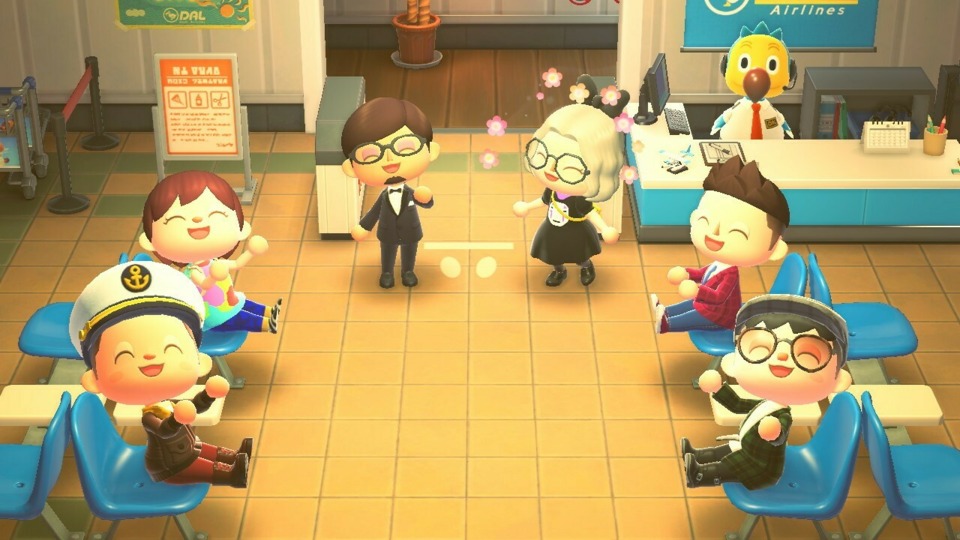
So begrudgingly, I built it myself. I built a little table, drew little placemats, made a little stand, put some carpets down, and surrounded the newly minted Ramadan Square with lamps and lights. Over the course of Ramadan, I hosted over one-hundred people from all around the world during breakfast and dinner, Muslim and non-Muslim alike, on my little Animal Crossing island. I introduced them to my friends, showed them around the places I liked, and we sat and talked at a little festive table, surrounded by lights, with the moon looming high in the sky above us.
While I am still sad and annoyed that a game such as Animal Crossing fully ignores a cultural event that deeply defines the year of billions of people, I am impressed that the game has the flexibility for me to build it myself and share it with others. But most of all, I am thankful for the connection it gave me to people at a time where I had none--the sense of being in a place that is my own, with some real people, at a real time.
Best Touch: When you think about it, Animal Crossing: New Horizons is mostly a game about pacing. Sure, what you’re thinking about is where you want to go, what you want to do, how to catch that last fish--but what you’re doing most of the time is running around your little island. Whether you’re running in circles with friends or taking a small walk around your island, Animal Crossing: New Horizons has some of the very best movement feel I’ve seen in a game in years.
Least Favorite: What happened to the multiplayer in this game? Instead of a fun, snappy experience, players looking for the most social experience in the game are treated with what is probably the most excruciating implementation of multiplayer I have ever seen. I can forgive Orville going through some legal disclaimers every time, although I have a hard time imagining why entering a typo in your Dodo Code requires you to go through all of them again. Then you get to the other players’ island, and your experience involves waiting for other players to fly over and getting disconnected and all your exchanges being undone. I honestly play Animal Crossing: New Horizons multiplayer with trepidation rather than joy, which feels like an even bigger failure than it just being broken. At least one could hope for that being fixed.
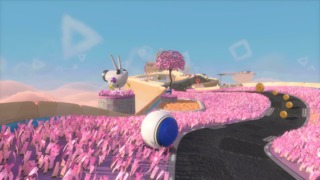
Alt: Astro’s Playroom brings back the adorable robot Astro to introduce another piece of Sony hardware, and once again that robot brings one of the most delightful gaming experiences of the year. Astro games tend to focus on new hardware, and mix the exploration of the device with the sense of joy and exploration in the game. For the PlayStation 5, that means that you’ll be using every aspect of the new DualSense controller as you run through breezy levels that occasionally turn up the heat. I think the grin only left my face for a few moments throughout my entire playthrough, and it was my fault.
Best Multiplayer: Destiny 2
Destiny remains my end-of-day destination for every day that my PS5 is around, and Beyond Light is the best iteration of Destiny since its original launch. Beyond Light also shouldn’t be mistaken as an expansion pack--it is effectively an entirely new title. The expansion brought new progression mechanics, added an enormous new planet with dynamic weather, and a new class that required a full re-balancing of everything so far, introduced a new weapon paradigm, revamped the entire UI, launched for next-generation consoles, laid the groundwork for faster iteration cycles by removing old content and adding a gear sunsetting system, and created an entirely new and entirely good onboarding sequence.
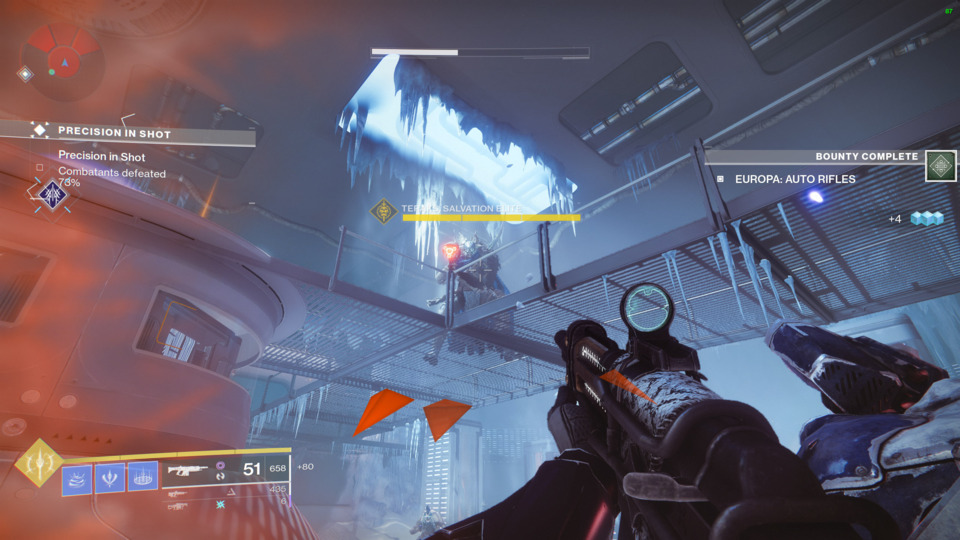
The new campaign this year decidedly had more momentum than Destiny had before, as a long-anticipated galaxy-wide threat attacked and captured most of our solar system. In the most traditional The Matrix story-telling tropes, the player failed to stop the arrival of an overwhelming force throughout the year, and then spends the rest of the year trying to recover until they eventually yield and embrace the powers of their enemy to have a chance at fighting back.
After you beat the campaign, Destiny 2: Beyond Light keeps evolving the story through weekly narrative moments, to tell the story of the Crow and the story of the rising Hive goddess Xivu Arath, which makes the story feel like it has continuous momentum, and that we’re standing at the start of great things to happen in the game.
Best Touch: Destiny 2: Beyond Light streamlines Destiny 2 into something resembling a hobby rather than a second job again, and while I never minded the (very enjoyable) second job, I will say I enjoy it as a hobby way more.
My favorite thing is that Destiny is becoming a bit more defined as to what it actually seems to want to be. I’ve always loved the game, but it has swung wildly between ‘you have to play this daily’ to ‘check in once every two weeks’, which added an unpredictability to a game I would rather play without thinking too much about how much I need to play. The game seems to be finding a rhythm of ‘grind for two weeks then come back in two-and-a-half months’ or ‘play a few hours every week and you’ll be fine across the season’.
I can talk about Destiny 2 for hours, but the short version is that it is in a healthier state design-wise than it has ever been. It’ll take some time for it to build up content again for an ever-hungry community, but the foundational structure that the game is built on seems more expandable, maintainable, and controllable than it did before.
Everything else remains the same: Destiny 2 is a masterclass in game combat and mobility feel, offers delightful game design and execution in terms of unique encounters and modes and spaces, and is made with the confident (and extremely difficult to pull off) space-fantasy opera bravura that somehow allows the game to have a coherent atmosphere across a floating cowboy city asteroid field held together by chains, a horrific-accident underground laboratory hidden on a frozen moon, and basically Rivendell in a wormhole.
Least Favorite: All player-versus-player activity that is not Mayhem is an absolute mess with Stasis around, and while it’s fun for a few times, it’s not fun for very long. There’s definitely balancing to be done if the classes are going to influence gameplay beyond ‘you die’ or ‘you don’t die’--being frozen isn’t very fun.
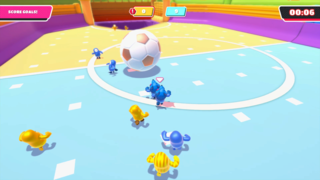
Alt: Fall Guys: Ultimate Knockout is the obvious follow-up for 2020, a game that took our living rooms by storm, put a smile on millions of people’s faces, and then sort of quietly receded back into ‘a hit game’ from ‘culturally defining game of the month’. An elegantly designed mini-game extravaganza for 60 players at once that also confidently showcases the importance of exceptional level design, Fall Guys is paired with a cute style and a soundtrack that somehow does not get boring even after hearing it for the thousandth time.
Best B-Game: Captain Tsubasa: Rise of New Champions
You know that feeling where Pokémon feels nostalgic, mostly because it started somewhere... 25 years ago in the past? Captain Tsubasa has that exact same feeling for me. An anime football series from the '80s, it was localized to Arabic as Captain Majid so well that kid me genuinely thought Tsubasa was a Japanese translation of an Arabic show. The series follows the trials and tribulations of young anime football captain Tsubasa, his high-octane optimism, and his rivalries and friendships--and his story is about as nostalgic to me as anything can possibly be.
With high hopes comes the risk of the game falling short, yet it somehow exceeded expectations. In fact, I would say that this is probably the best sports game I’ve played in years. While I enjoy my FIFAs and NBAs and what-not, my love for sports games has always come from the sillier “inspired by a true sport” kind of games: Mario Tennis Aces, NBA Jam, NFL Street 2, Dunk Lords--stuff like that. Games in which the sport is dressing for a system that is more about reading your opponent, and figuring out how to get past them not just effectively, but decisively.
Captain Majid is the best version of football I’ve ever played. Like Mario Tennis Aces, it is more of a fighting game than a sports game, with increasingly intricate mechanics that slot into each other elegantly and spectacularly--but the game never becomes complicated in its input. At the same time, the game never loses its anime charm--because how fun would a football game be if physics worked in such a way that two people kicking the ball at the same time meant the ball went twice as fast?
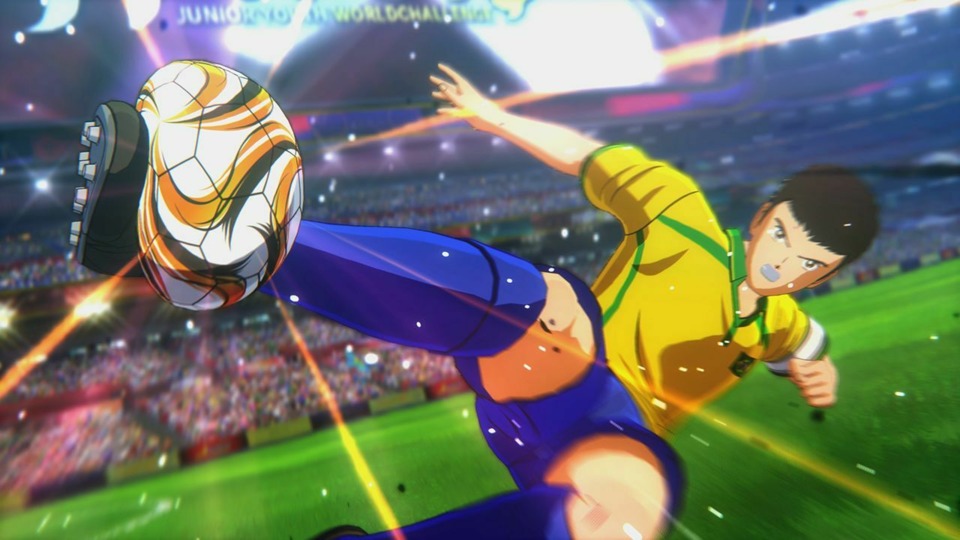
While the multiplayer is solid, the single-player is almost gratuitously complete with a full and deep RPG system, character customisation, social development systems, and an absurdly complex visual novel. A tutorial campaign follows Majid and his friends through the high school cup against rivals Bassam, Ra3ad, Mazin and Majd--only they all have their original Japanese names now. After that, in the main campaign, players get to pick one of the rival schools to develop a custom character and play through a mysterious World Cup challenge. Developing this character is super fun, as you choose from hundreds of perks and abilities to grow them into exactly who you want them to be. The main campaign has three entry points, half a dozen endings, and some secret endings to wrap things up.
All of this is not football--to be absolutely clear--it looks like football, but beyond ‘crosses’ being a good strategy in general, you’ll be shooting from midfield, doing bicycle kicks as a default, and most good shots will involve a giant flaming eagle or similar appearing to set the ball on fire. The goalie will catch the ball but be so utterly overwhelmed by the momentum that they fly backwards into the goal with the ball still spinning in their hands, and the average conversation is about how “Tsubasa has improved their football through sheer power of will” and “the legendary quartet of defenders” and a genuine subplot about a secret “black football” that is twice as heavy and thus kicking it makes you better twice as fast. The referee has clearly never read the rulebook beyond “if the ball goes over the line, it’s out”, which means the game only stops if the time is out, or the ball leaves the field (on fire or not).
In the end, Captain Tsubasa is a game about the power of friendship, and how if you kick that power of friendship into a football hard enough, it’ll catch on fire and you’ll be more likely to score goals.
Best Touch: Stamina informs how well your characters run and dodge and block shots, but it also informs your goalie’s ability to stop a shot at the goal. If you take a weak shot at a rested goalie or if you take a double-charge twin shot at a weaker goalie, the (spectacular) animation will last a quarter of a second at best because the outcome is pretty clear. If the end result of your shot is less certain, the animation will extend, and can last a full second or more. It builds the tension as to whether the ball goes in or not. Simple, subtle, powerful.
Least Favorite: This game has so many meta-systems and half of them are utterly unnecessary to what the game is trying to achieve, but made necessary to what the player has to do to optimize their play. The soccer works incredibly well, but the social systems and friendship systems could’ve used another pass or five.
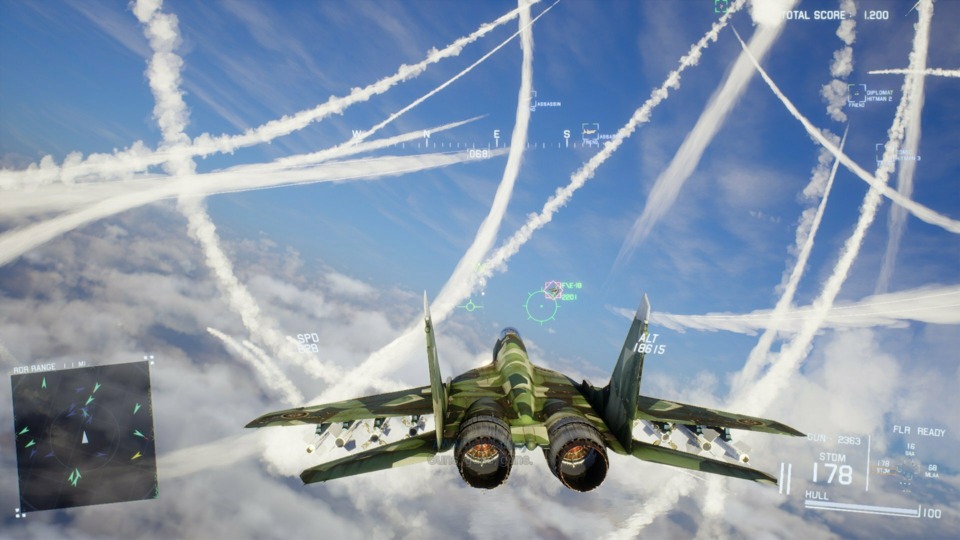
Alt: Project Wingman is your dose of Ace Combat for the year, if Ace Combat was made by a team of one developer, a composer, and a writer. Project Wingman is everything you could possibly want from an indie take on the melodramatic game series, with almost unbelievable presentation, a near-future apocalyptic world that allows wildly different biomes, enemies that escalate in size and skill almost immediately, a world in which fighter pilots are both the worlds’ leading politicians and philosophers, and a worse-but-actually-this-is-exactly-what-I-want story. It is almost impossible to not compare Project Wingman to Ace Combat 7, and while there’s no memorable “what does the colour of the sky mean to you?” or “what is a nation?” here, the game will put a (focused) smile of recognition on your face throughout.
Best Indie: Noita
I’ve traveled the globe for almost a decade, meeting with developers and creators everywhere around the world. As you start to see the contrasts between the countries, you learn that every country’s community has its own unique fingerprint. These fingerprints are dependent on who the local heroes and role models are and were before, the structures in place that teach game design and development, the resources and support available to developers, and even things like the climate and economy and cultural attitudes towards work and entrepreneurship. Over the years, a community grows that prioritizes some things and doesn’t care too much about others, that has certain expertise to make certain games readily available and no expertise to make other games around at all.
Some games then carry a local developer culture in their fingerprints, and Noita might be the most Finnish game ever created. Noita is the brainchild of Finnish game developer Petri Purho, who is perhaps best known in developer circles for being one of the originators of ‘Juice’ as a term for exaggerated feedback in games. Noita is partially inspired by the Finnish game Liero, which was a modding favorite for almost a decade back in the early 2000s. In Noita, you play a witch fighting Finnish creatures from Finnish mythology. It has a Finnish relentlessness and stubbornness and irreverent playfulness to its design, the pitch sounds like an absurd Finnish demoscene programming challenge in which ‘every pixel is simulated’, and the team primarily consists out of fellow Finnish designer Arvi “Hempuli” Teikari (Baba Is You) and Finnish developer Olli Harjola (The Swapper).
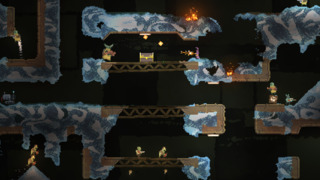
Noita is the type of permadeath 2D platforming game that makes utter sense when you play it, but is almost impossible to explain in words. In Noita, every pixel is simulated. That means every pixel interacts according to what it is with every pixel that it touches, similarly to those old mobile Alchemy games where you’d mix things together to get new things. As you traverse down the caves, you come across wands and abilities that allow you to acquire certain spells or modifiers or abilities or effects. Some of these are straightforward, like conjuring water or fire or electricity. Some of these are even more straightforward, like summoning a nuke or a black hole (or a Giga Black Hole).
Either way, the tempo of the game is kind of left up to you--so you can spend minutes at a time mixing these wands and their properties with spells you’ve come across to create the ultimate collection of powers. Whatever you end up splicing into your Frankenwand, it’ll interact with the world and enemies and yourself in ways that are often at least marginally helpful as long as you know how to direct it, and instantly lethal if you don’t. The majority of my memorable deaths in Noita feel like the ones where I experimented with a new wand I just mixed together and wondered “what is the worst that could possibly happen?”.
In that lies the beauty of Noita for me--it’s a game about your curiosity eclipsing your own common sense. It’s quite straightforward to progress through the game given the right spells, but it is incredibly hard resisting the urge to take some risks and try some new things. Noita rewards curiosity with death or absolutely absurd combinations, and it doesn’t seem too worried about letting players get absurdly over- or underpowered. It’s far from always fair, but it is always interesting, and usually fun. Ultimately, not everything you find in Noita can be golden, and even what is golden can bring you death.
Favorite Touch: Noita looks incredibly simple in screenshots, but gosh is it beautiful in motion. The reality of every pixel being simulated means that up to every pixel on your screen might be animated, and especially when some of the more over-the-top spells and abilities come in, the game frequently becomes absolutely stunning. It’s at moments like that that it doesn’t even matter if your run ends, you had fun looking at a kaleidoscope for as long as you could.
Least Favorite: Onboarding? Yeah, that’s not happening here. Noita expects you to experiment, and experiment you shall. The game teaches you how to walk, how to shoot, hopefully you’ll figure out how to kick, and then you’re staring at a screen full of numbers and options and Oh My God. Generally as a game designer, you’re taught about the different types of learning people bring to exploring a new games, and this game is squarely for the folks that just throw themselves at something until they understand it.
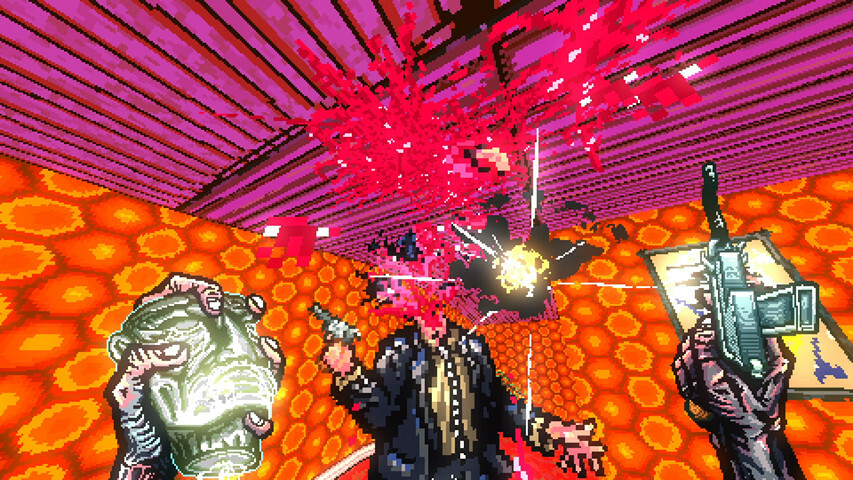
Alt: Post Void is so over the top in its effects that I am worried I should put a photosensitivity warning on this text in case you decide to look up a trailer. Post Void is Sonic meets GUN GODZ meets Hotline Miami meets Devil Daggers--it is fast, stylish, colourful, fun, forgiving, hardcore, short, relentless, relentless, relentless, relentless, relentless. It’s perfect. Post Void is a perfect FPS.
Best Mobile: South of the Circle
South of the Circle was a complete surprise for me. Launched on Apple Arcade--a platform I had high hopes for but have had to temper my expectations for--South of the Circle managed to fulfill the promise of polished and funded games that are interesting, strange, and genuine and capture styles and ideas we haven’t seen much before.
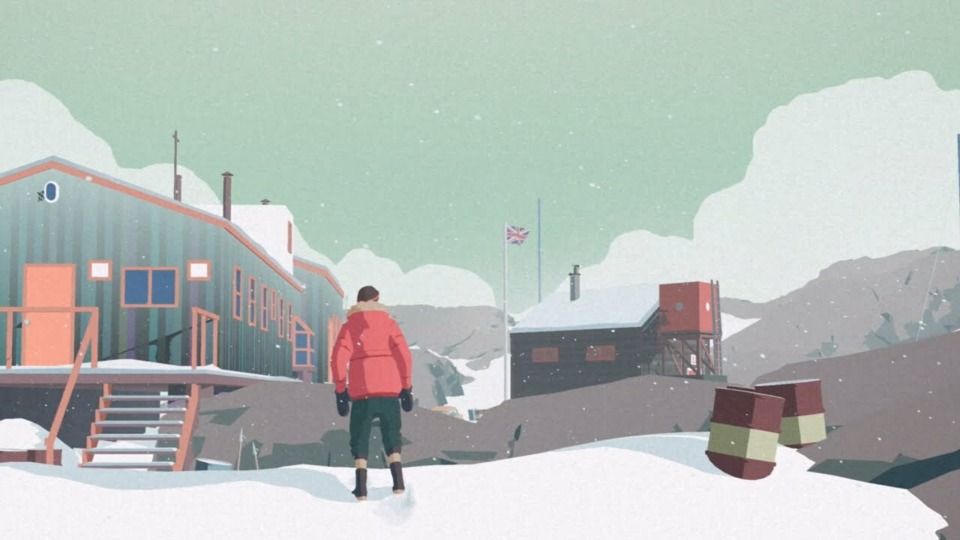
It’s the type of game that benefits from little discussion beforehand, and as such I won’t talk too much about it, but I did like the little narrative trick it plays on you. It’s a gorgeous and otherworldly adventure game set in the Antarctic, and a pretty straightforward linear narrative experience. If that’s the kind of thing you’re into, it comes with a recommendation--it is the kind of game that might leave you thinking about what you played and what it means for a while, but even if it’s not, its depiction of our Southern-most continent is staggeringly evocative.
Favorite Touch: The jumping back and forth between ‘the normal world’ and ‘Antarctica’ makes for a really impressive contrast, and South of the Circle has pretty much confirmed that I want to visit the continent someday.
Least Favorite: At times, the game drags a little--it’s to be expected in a mostly linear title with minimal interaction--which is a little odd as it also has enough momentum that you probably want to play through it in as few sessions as possible. Can’t quite place my finger on what caused that feeling, but it was certainly there.
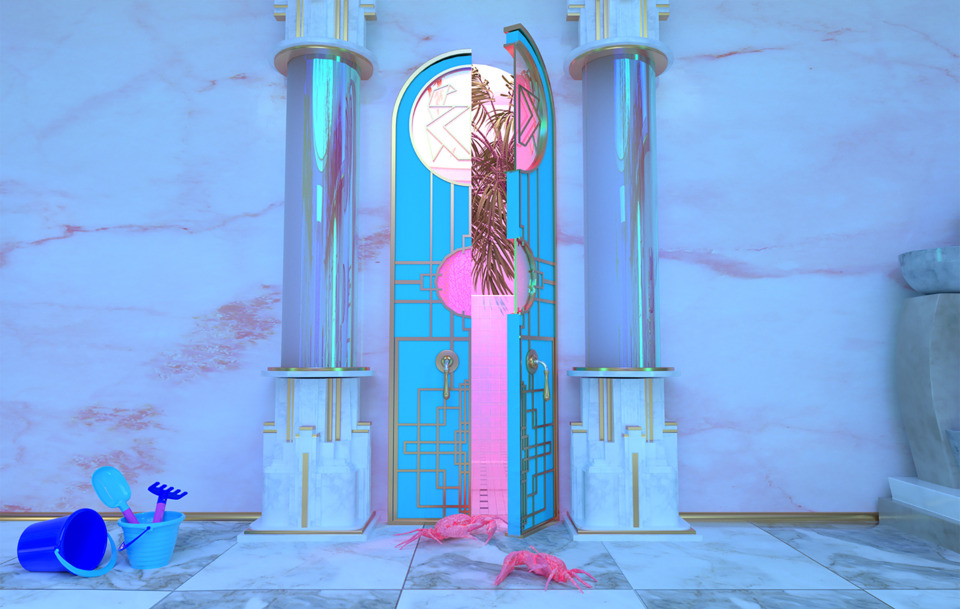
Alt: Holovista is a story about social media and its impact on people and their reality and identity, told through part-photography-game part-social media-simulator. It’s cleverly made and makes quite a few deep cuts throughout the game, especially for someone who might spend a bit too much time on social media himself.
Best ...: Museum of Mechanics: Lockpicking
It was not as if we were short on quality games in 2020, and as always, there are way more games that I feel should get a mention than I can meaningfully fit in the list. That’s why I always have this last category, a wild-card, a ‘whatever goes here’, as it gives me a way to talk about everything else before signing off.
There was a genuine barrage of extremely high-polish indie titles this year: you had the opportunity to play the overwhelmingly beautiful Ori and the Will of the Wisps, the surprising familiarity of Solitaire Conspiracy, the humorously clever Lair of the Clockwork God, the stunning vistas of The Falconeer, the gorgeous world of Paper Beast, the most sincere horror-game ever made in Bugsnax, and the surprisingly nimble action of The Pathless.
For me there’s no way to talk about 2020 without mentioning the two wildly different narrative works of brilliance centered around coffee--Coffee Talk and Necrobarista are both well-worth the few cups of coffee they cost to play through my hours of Flight Simulator. I also spent a lot of time playing puzzle and building games, too. Factorio finally officially released, and together with Besiege, Meteorfall: Krumit’s Tale, Mixolumia, and A Monster’s Expedition I had enough to do during my simulated flights around the world this year.

I was blown away by Umurangi Generation’s sincerity and the way it guides creativity and expression without sacrificing its own identity, terrified by Liquidators' genuine handling of a horrifying real-world subject matter, and impressed by Paradise Killer’s confidence in just dropping players into a mind-bogglingly fantastical world. I tore through spaceships in Hardspace: Shipbreaker, but also wistfully stared out of a spaceship window in the tiny but extremely memorable Under a Star Called Sun. I am Dead was an incredibly clever game about exploring a home that is no longer truly yours, and Spiritfarer and Signs of the Sojourner created a wonderful sense of having a “home” in travel and people in a year where I missed both a ton.
It was also oddly reassuring to play the phenomenal Disc Room and know that part of Vlambeers’ arcade soul and feel will continue onwards even after it shut down through the ever-excellent presence of my former co-founder in this industry. I will continue with a short break from running a studio (phew), but I absolutely have plans to continue to active development in the next few years.
In AAA I also appreciated the narrative confidence of The Last of Us Part II, and the laissez-faire attitude of ‘chill open-world’ in Immortals: Fenyx Rising. Earlier in the year, Dragon Ball Z: Kakarot finally was the big complete Dragon Ball Z game that teenager-Rami wanted to play (and tried and failed to make at least six times during those years). Half-Life: Alyx was an incredible VR title, and would've easily been the most impressive VR experience I've ever had if it wasn't for Flight Simulator. One can only hope that future breakthrough VR devices will not be forcefully tied to social networks--there clearly is a ton of future in the VR paradigm, and I can't wait to see more of it, and to see more people get the opportunity to try at all.
And this year also made me want to mention some odder additions: Among Us obviously came out in 2018, but defined much of 2020 in every way a game can define a year. Jelle’s Marble Runs, which was a YouTube channel that raced marbles for groups of people to watch and cheer for, ended up being an incredibly video-games-ey experience that I don’t think I should forget to mention for whenever I read this in the future. And Blaseball I never actually touched, but still kind of played through the incredible amount of discussion, discourse, and conversation about a game that almost entirely takes place in the minds of those playing it.

But the game that I feel should go here is called The Museum of Mechanics: Lockpicking. It’s a pay-what-you-want project by Johnnemann Nordhagen, who you might recognize from Gone Home and Where the Water Tastes Like Wine. In this three-dimensional museum, Johnnemann has been diligently collecting lockpicking minigames from any game he could find, and making playable approximations of them in the museum for you to play around with. It made me realize that maybe more than a museum of games, what I truly want is a proper cataloguing of game mechanics and their history and evolution.
Best Touch: It exists.
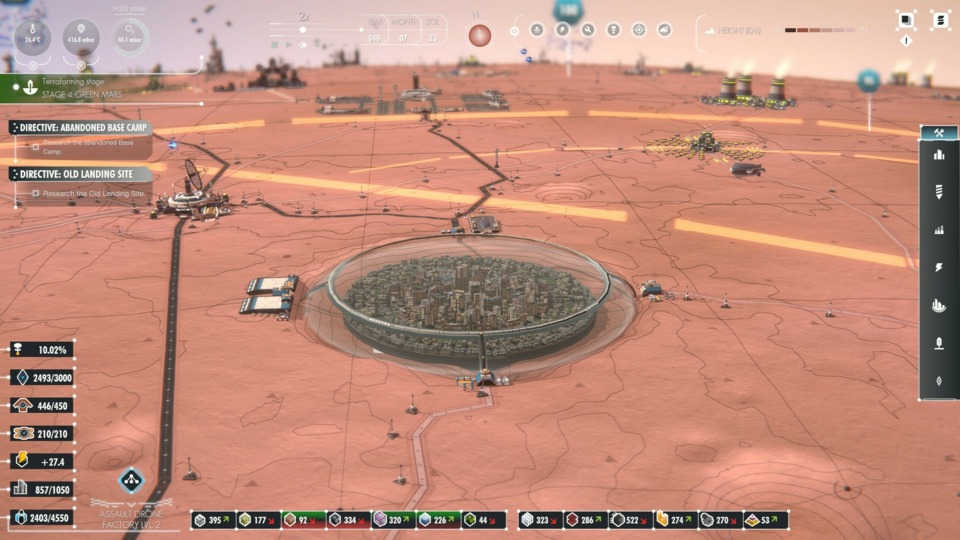
Least Favorite: It doesn’t exist for every mechanic ever.
Alt: Per Aspera is a narrative city-builder (planet-builder?) game. If you like the genre, tolerate complicated mechanics being half-explained, and enjoy feeling entirely overwhelmed and out of your depth most of the time, this game is for you--the satisfaction of everything finally coming together is worth it.